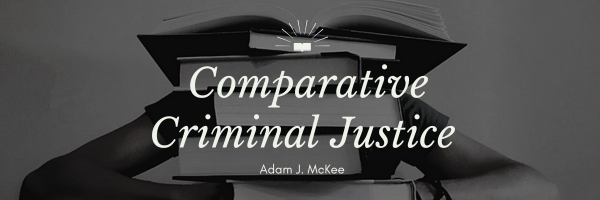The UK’s legal system is a cornerstone of the common law tradition, shaping how laws are created, interpreted, and enforced. Its unitary government structure centralizes authority, impacting everything from police oversight to how judges are appointed. But it’s not just about modern laws; the UK system is steeped in history, with iconic documents like the Magna Carta still influencing principles of justice today. This blend of the contemporary and the historical creates a legal system that’s both adaptable and grounded in the pursuit of fairness.
Reading Time: 5 minutes
While my Ph.D. is in Administration of Justice from an American institution, I have done my best to provide accurate information about other countries’ criminal justice systems. I welcome corrections or additional insights from experts and professionals—please contact me via email or the comment box below.
Unitary Government Structure
Definition and Characteristics of a Unitary System
In a unitary system, the central government holds the reins of power, making the big decisions and calling the shots for the whole country (CITE). Unlike the United States, with its division of powers between federal and state governments, the UK’s central authority—Parliament—reigns supreme. While Scotland, Wales, and Northern Ireland do have some self-governance, they ultimately operate under the watchful eye of Westminster, the heart of UK power. This centralized structure shapes how laws are made, how justice is administered, and even how policing is carried out across the UK.
How the Unitary Structure Shapes Criminal Justice
Think of the UK’s approach to criminal justice as an orchestra, with the national government as the conductor. Parliament sets the tempo by creating criminal laws and making sure they’re applied consistently across England and Wales (CITE). The Home Office acts as the first chair, overseeing law enforcement agencies and keeping the beat steady. While Scotland and Northern Ireland have their own unique legal traditions, they still harmonize with the overall UK approach, especially when it comes to national security issues like terrorism. This centralized system ensures everyone marches to the same tune, promoting a sense of unity and fairness across the country.
Strengths and Challenges of the Unitary System
The UK’s unitary structure has its high notes and its low notes. On the plus side, it allows for swift policy changes and keeps legal standards consistent, preventing a jumbled mess of laws from region to region (CITE). But there are challenges too. Balancing the needs of different regions with national priorities can be tricky, and sometimes resources aren’t allocated evenly, leaving some areas feeling a bit out of tune. For example, Scotland’s desire for more control over its policing sometimes clashes with national security policies, creating a bit of dissonance in the UK’s harmonious system.
Influence of Historical Legal Documents
The Magna Carta and Its Legacy
Journey back to 1215, a time of knights and castles, and you’ll find the seeds of the UK’s legal system being sown with the Magna Carta (CITE). This historic document, essentially a peace treaty between the king and his rebellious barons, was a game-changer. It established the revolutionary idea that even the king was bound by the law, laying the foundation for the rule of law that governs the UK today. The Magna Carta enshrined principles like due process, protecting folks from arbitrary arrest, and the right to a fair trial—concepts that have echoed through the centuries, shaping not only UK law but also legal systems around the world, including the US Constitution.
Other Historical Legal Documents
The story doesn’t end with the Magna Carta. Fast forward to the 17th century, and you have the Petition of Right and the Bill of Rights adding their own verses to the UK’s legal songbook (CITE). The Petition of Right put the brakes on excessive taxation and reinforced habeas corpus, the right to challenge unlawful detention. Then, the Bill of Rights cemented Parliament’s power and further bolstered individual rights, including the presumption of innocence and the right to trial by jury. These documents, like layers of rich soil, nourished the UK’s legal landscape, ensuring that justice would be rooted in fairness and balance.
Contemporary Relevance of Historical Documents
You might think these old documents are just museum pieces, but their influence lives on. The principles enshrined in the Magna Carta, Petition of Right, and Bill of Rights continue to inspire modern legal frameworks. Take the Human Rights Act of 1998, for example—it’s essentially a modern echo of those historic rights-based documents, ensuring that everyone in the UK is treated with dignity and respect (CITE). Of course, balancing these time-honored principles with modern-day challenges, like national security concerns, can be tricky. But the UK’s commitment to upholding these fundamental rights, even in the face of contemporary pressures, is a testament to the enduring power of its legal heritage.
Conclusion
The UK’s legal system, with its centralized power structure and rich historical roots, provides a unique lens through which to view criminal justice. The unitary government, with Parliament at the helm, ensures a unified approach to lawmaking and enforcement across the country. Yet, woven into this modern framework are threads of history, with iconic documents like the Magna Carta still shaping fundamental principles of justice. This blend of the contemporary and the historical creates a legal system that’s both adaptable and grounded in the pursuit of fairness. With this foundation laid, we can now turn our attention to the specific components of the UK’s criminal justice system, exploring the intricate workings of law enforcement, courts, and corrections in the sections to come.
Modification History File Created: 01/23/2025 Last Modified: 01/26/2025
You are welcome to print a copy of pages from this Open Educational Resource (OER) book for your personal use. Please note that mass distribution, commercial use, or the creation of altered versions of the content for distribution are strictly prohibited. This permission is intended to support your individual learning needs while maintaining the integrity of the material.
This work is licensed under an Open Educational Resource-Quality Master Source (OER-QMS) License.

